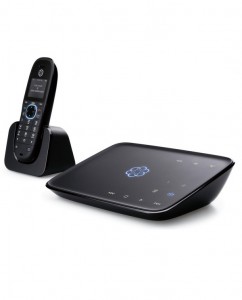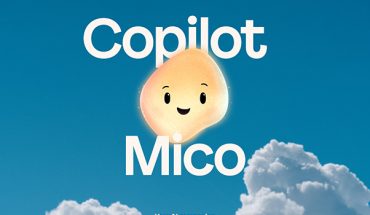 The Ooma Telo is a Voice over Internet Protocol (VoIP) device that uses your home’s broadband Internet connection to provide an alternative to a traditional landline. And it does so at a fraction of the cost, but is it easy enough to uproot your landline and replace it with technology like this?
The Ooma Telo is a Voice over Internet Protocol (VoIP) device that uses your home’s broadband Internet connection to provide an alternative to a traditional landline. And it does so at a fraction of the cost, but is it easy enough to uproot your landline and replace it with technology like this?
My parents were the guinea pigs for this project because they no longer wanted to pay an obscene amount every month just to talk to friends and family on the phone. While the allure of saving a significant amount of money was a big incentive, the one sticking point for them was whether or not they could keep the same number. Ooma offers a way to check that before shelling out any money to buy it.
Number porting is an extra $39.99 one-time cost that they needed to also factor in, and the process would take three or four weeks to complete. They could assign a temporary number to the Telo until the port was finished, and Bell’s service was to be uninterrupted until then.
On this same page, you can calculate your savings, test the speed of your connection and see what fees and taxes you’d have to pay. While the standard service is free, you still have to pay a few dollars in fees and taxes mandated by the government.
The unit itself also comes with a hefty price tag upfront. At $200, the Telo must be viewed as an investment that pays for itself in a relatively short period of time, which is how Ooma puts it. The company also makes it clear that to have a Canadian number and get free nationwide calling, you need to buy the unit from a Canadian retailer, so it makes no sense to buy it in the U.S. for a little bit less and bring it back.
So, while my parents knew they could save money, they had to consider the upfront costs as well. What if they didn’t like the service? Would the overall experience match that of a landline? Could they return the unit? Retailers are pretty good about returns, except big box ones like Future Shop, Best Buy and Costco appear to only sell it online. That makes the return scenario a little different.
My parents also have DSL at their house, and to cancel their Bell landline without interrupting the Internet, they would have to make sure they have a “dry loop” connection, meaning that the Internet is coming from a separate line that is unattached to a landline. Since they didn’t, they had to call Bell to inform them of their plan to cancel the phone service and request dry loop access to keep the DSL going. A Bell representative told them the transition to dry loop would be seamless once the number porting was completed. Bell also wouldn’t charge anything extra for the move.
Since the process takes three-to-four weeks, the landline isn’t interrupted, and the change is confirmed via email, wherein any adjustments with wiring can take place. In a multi-story home, this can get a bit tricky, but there are a couple of options. If the Telo is connected to the main line coming into the home (which would be great if it’s near the router too), then using a phone jack splitter to have both an inbound and outbound connection would be ideal. From there, it’s conceivable that other phones in the house may work because they’re connected to the same junction.
If not, the other option is to use a cordless phone set where the base is connected to the router, and the satellite ones are used in other parts of the house. Because the main connection is established at the base, the satellite units wouldn’t need to have phone lines attached to them.
So, to recap, here were the costs my parents had to look at in moving over to the Ooma Telo from a landline. First, the unit cost $200 plus tax. Then there was the $39.99 one-time fee for porting the number over. Each month, they would have to pay the taxes and government fees, which amounted to $3.74. With free calls throughout Canada, caller ID, call waiting and voice mail included in the standard package, they opted not to sign up for the Premier package at $9.99 per month, though Ooma does offer that as a trial for the first 60 days. As they wouldn’t want to continue on after that, they had to indicate as such in the My Ooma portal on the company’s website.
All told, it would be just north of $300 when upfront costs and monthly fees are factored in over a 12-month span. Long distance to Europe would be extra, of course, but rates are competitive. Comparing that to average monthly bills that were easily $80 per month for the existing landline, the savings offered was what initially got them interested in switching over. In setting it all up, it was important that they had all their ducks in a row on the 911 emergency features, too. Ooma wisely has detailed instructions on that, though it’s really just a simple matter of confirming your address.
While it’s a process, and it requires understanding some nuances on how it all works, switching from an existing landline to a VoIP-enabled product like the Ooma Telo might be an investment that keeps more money in the home. Voice quality is easily comparable to a landline, and in case of a power outage, a cell phone should be good enough to reach out to someone.
But there are some drawbacks. If the Internet is down for any reason, then the Telo can’t work. VoIP is also still a misunderstood technology, especially for an older demographic used to traditional landlines. The wide feature set of the Telo may be lost on those who wouldn’t know how to manage their accounts or make changes. And number porting isn’t universal, so even if you want to save money, but can’t port the number over, you have to decide on if you want to give up your existing number and adopt a new one.




I’ve been an Ooma user for about 8 months now…. and like many others wished I’d dumped Bell a lot sooner. I’m in the GTA and still with Bell for their dry loop Fibe internet which is reliable.
I make a lot of call to Europe but not US… so the premier service didn’t really offer me much… I don’t need a second line at the moment either.
Rates to UK are excellent… prepay by credit card (I chose $10) and it tops it up when nexessary… at 1c or 2c a minute (can’t remember) $10 lasts a couple of months. So my only regular fee is the $4 monthly for 911 service (mandatory).
Line quality is excellent. Overseas line quality is very significantly improved over the bell landline (crazy as that sounds it’s absolutely true… family have stopped complaining about poor quality and I never have to call back to ‘try again for a better line’…).
So I’m saving ~$55 dollars a month…. from my previous $60+ Bell bill…. I also feel energized that I’m actually standing up to Bell (in my own small way).
I have Omma connected to the home base of a 4 phone wireless home phone set… so no worries about wiring. My DSL router, Ooma box and home phone base are all on a small uninterrupted power supply box (backup power) and I can confirm through the many power interruptions we’ve had this winter the phone line was never lost. The router, Ooma and phone only consume 28W of power in total… to the 350W box I have will last hours if needed.
Also, the voicemail is better than anything else I’ve tried or seen.
Overall very happy with Ooma.
Ooma does not work well in Eastern Canada, the sound quality is bad, echo and drop out voice. Ooma may work well in other places but in P.E.I. for some reason we have to call through Halifax N.S. and there goes the sound quality. Was a waste of money for me.
I switched to Ooma at the beginning of December 2012, and it is now near the end of March 2013 so we have almost 4 months with Ooma. So far I would say it works fine. You have to be prepared for a few bad calls occasionally though. I bought the Linx and have it on a fax line with a separate number, and from that alone you now know I have subscribed to Premier Oooma service.
The Cons first.
I was unable to port my old number as I live in a rural area. The toll free (800, 866,877 etc) numbers generally do NOT work. No big deal until you need to call Revenue Canada, Provincial or Federal Government services including Health Line, Prescription Drug lines etc. While lots of places have direct numbers most government ones do not. I called CAA Saskatchewan’s toll free number and got AAA in the USA (they use the same toll free number). You need a cell or landline to call most local or Canada specific toll free numbers. There is no directory listing included for your number. Your number is now unlisted. I still have not got my outgoing caller Name ID working, it only displays “unknown name” when I phone people with my new number, which confuses people screening calls. Call quality degrades sometimes if doing heavy up/downloading on other computers or Netflix etc. There is a slight delay when answering the Ooma connected phone. Will not work in electrical blackout with out back up supply.
The Pros
I got a Saskatoon number, the choice was Saskatoon or Regina for area code 306. You don’t have to dial the 1 on any call, just the 10 digit dialing. I love the voicemail and spam filtering options that get rid of telemarketing callers or even blocked number callers. Call quality is good and even excellent to other Ooma subscribers. Ooma has online chat and toll free support available for problems. After purchasing the Ooma box and Linx (for fax) the ongoing cost is insignificant. You save by prepaying for 1 year ($99/yr or $9.99/mo). No more long distance in North America with reasonable rates overseas. The Ooma box can back feed your house wiring (disconnect local telco first) and service all of your house jacks. The Ooma box integrates with your cell phone to answer cell calls with your Ooma connected phones with bluetooth. Call display works on the Shaw Direct box to see incoming calls on TV. If your internet or Ooma goes down it automatically forwards all calls to your cell phone if desired. You can have Ooma and your cell both ring at the same time if desired. Voice mail can be forwarded by email to work or cell. The equipment cost is low, I will save almost $500 in the first year alone and almost $800 yearly beyond. For $800 savings I can use my cell phone occasionally to fill in the service. Use the same back up power supply as your router and modem to ensure service with no electricity.
Thanks for the question, JG, and apologies for not responding sooner.
My parents couldn’t be happier with how the switch has worked out. They’ve saved an average of $47 per month since they ported their landline over to Ooma. The device paid for itself in 5 months.
The key for them is that it’s as if nothing’s changed. Call quality is on the same level, friends and family haven’t noticed anything different and there isn’t any real upkeep for them to think about. Saving the money they are only makes them wonder why they hadn’t done it sooner when I suggested it.
Another feature they liked in the Premium package (they didn’t renew after the 2-month trial) was that they could both talk on the phone to different people at the same time. They just felt they didn’t need all the features Premium offers to justify the $9.99 monthly fee. They opted instead for the long distance minutes, which they put to good use.
So, can you follow up on your parents experience? Was it a good decision? Does the Ooma work well?
Thanks
The sound quality is fantastic but for me it’s the line features that make this so worthwhile.
In particular: I love that it simultaneously rings both my home phone and cell phone so that when I walk out of the house I know I won’t miss any calls. Plus I now only give out one number to everyone, and know I won’t miss a call; I don’t have to give out both home and cell.
And Ooma’s “community blacklist” for telemarketers (it automatically routes them to voicemail where they NEVER leave a message) means I almost never see a call from someone I don’t want to talk to. (And if I don’t know the number, I let it go to VM.) It’s amazing.
The big drawback with Ooma for me is that the sound is laggy. I frequently find myself talking over top of the other person on the line because the sound transmission hasn’t caught up yet. This is very frustrating and confusing. If it weren’t for all the other great features it would be a deal breaker. (My internet connection is 10Mbps/4Mbps, which is huge for this kind of data — so it’s not the connection.)
Overall it’s worthwhile but they need to figure out how to relay their data more efficiently.
Really reliable without any big difference in high-quality from our outdated land line and, not surprisingly, it saves us a good deal of money. We very suggest Ooma.